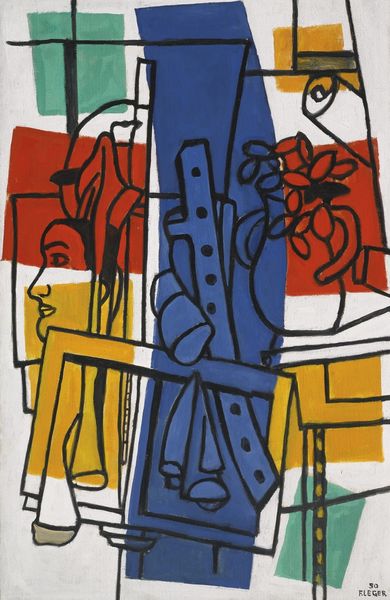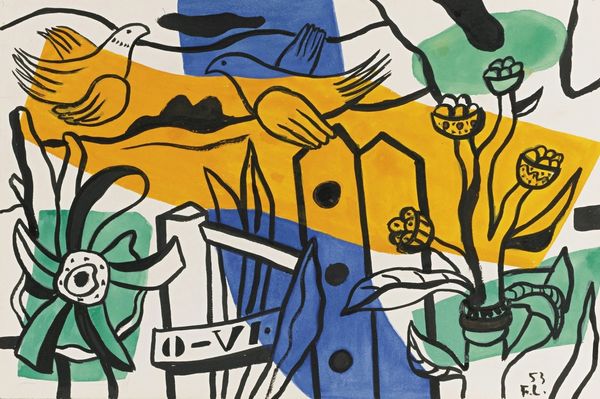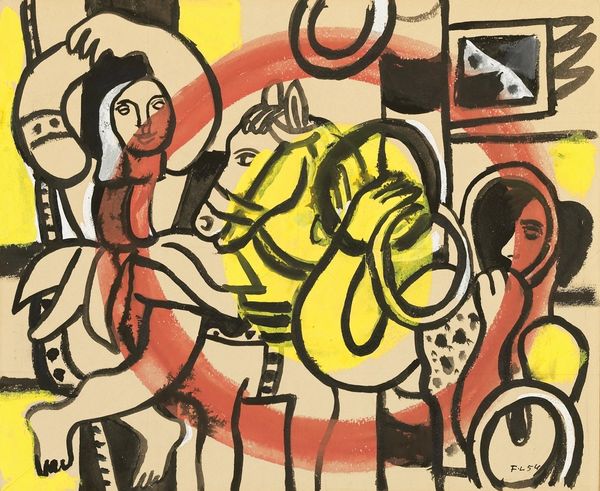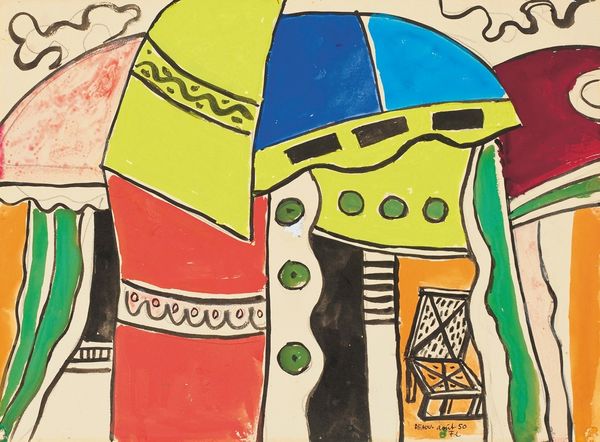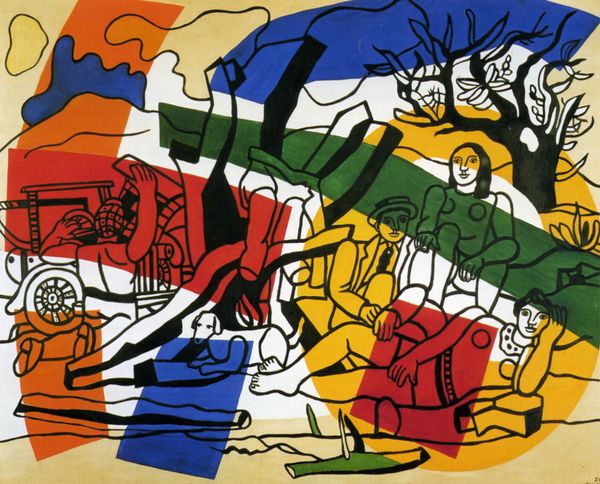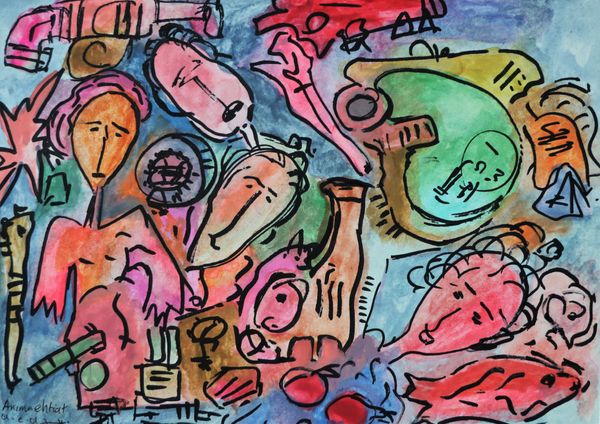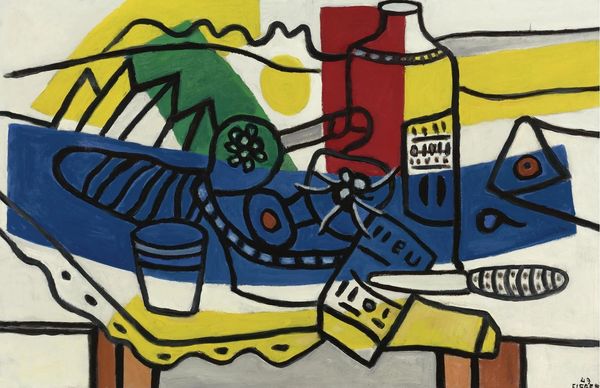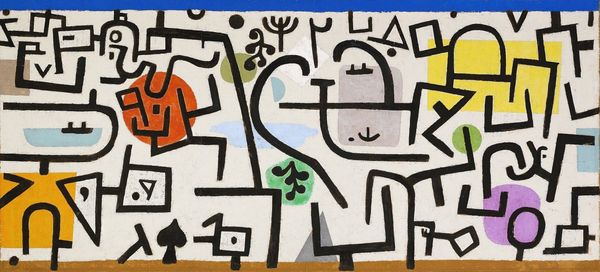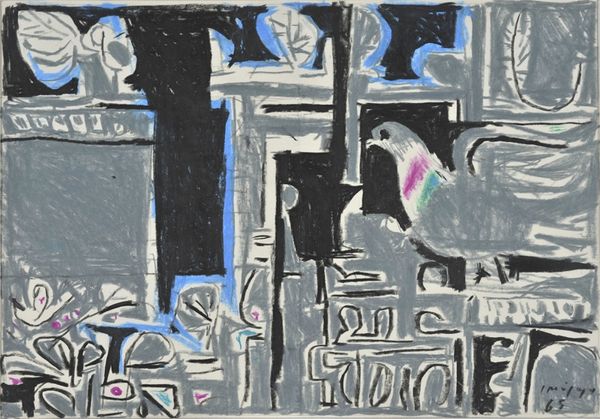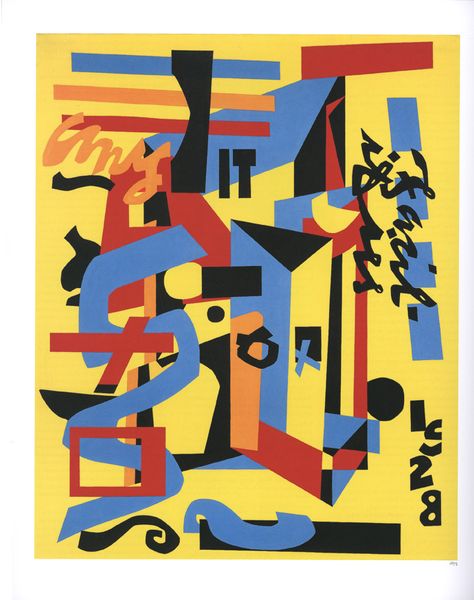
Copyright: Modern Artists: Artvee
Fernand Léger made this study for "The Camper" in 1953, using gouache and ink on paper. Léger deliberately adopted accessible materials and processes, aligning himself with the everyday experiences of working-class people. Here, we see bold fields of color contained by confident black lines, depicting figures and fragments of landscape. The effect is both raw and refined; the hand of the artist is evident in the slight irregularities of the brushstrokes. The materiality and making processes are key to understanding Léger's social vision. Gouache, an opaque watercolor, allowed for quick, efficient application, mirroring the speed and efficiency of modern industrial production. The directness of the ink lines emphasizes the importance of clear, accessible communication, a visual language for the modern age. This wasn't about esoteric skill; it was about connecting to the pulse of contemporary life. Léger's choice of modest materials serves to democratize art, blurring the boundaries between high art and the visual culture of the masses.
Comments
No comments
Be the first to comment and join the conversation on the ultimate creative platform.
